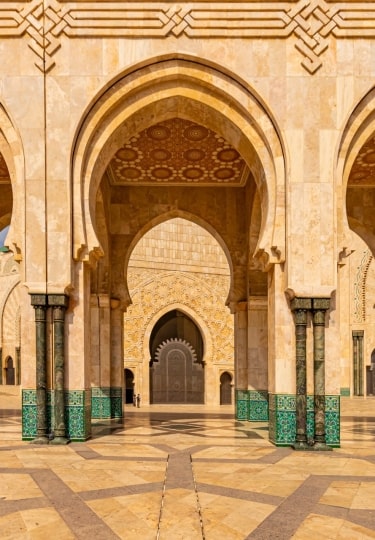As Morocco’s largest city and its main port, Casablanca is known for its energy and commerce. With its mix of Arab, Berber, European, and African influences, it has a rich history, culture, and cuisine.
The city is modern, but also retains many handsome art deco buildings from the early 1900s. Its name, meaning “White House” in Spanish, refers to the white-washed buildings of the Old Medina.
The Hassan II Mosque, with one of the world’s tallest minarets, is a major landmark. Sitting on the Atlantic coast, Casablanca is also famous for its beaches and its seafront Corniche.
Shopping
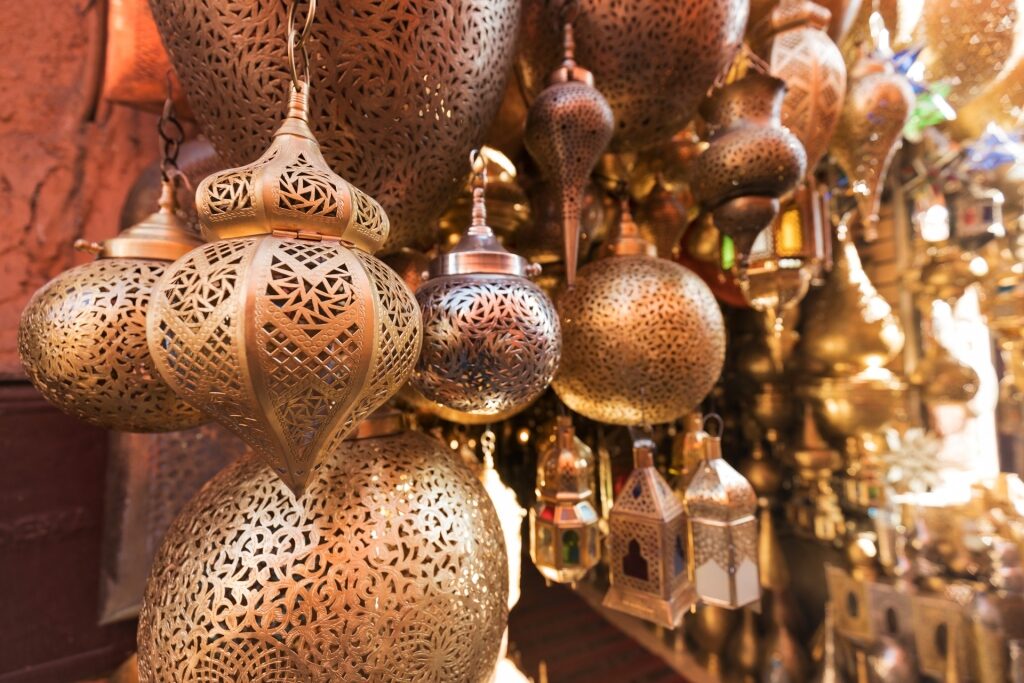
Moroccan souvenirs
With more than three million people, Casablanca has everything you expect in terms of modern shopping malls. The Morocco Mall on the Corniche is the most famous, being one of the largest in Africa.
But what is Casablanca famous for in the more traditional sense? Crafts is the answer. For traditional Moroccan crafts, you will want to explore the winding alleys of the Old Medina. Here, you can haggle for the leatherwork, carpets, and other artisanal goods that Morocco is well known for.
For something even more local, Casablanca pottery stands out. Hand-cut zellij tiles, usually arranged into pretty mosaic patterns, also make great souvenirs.
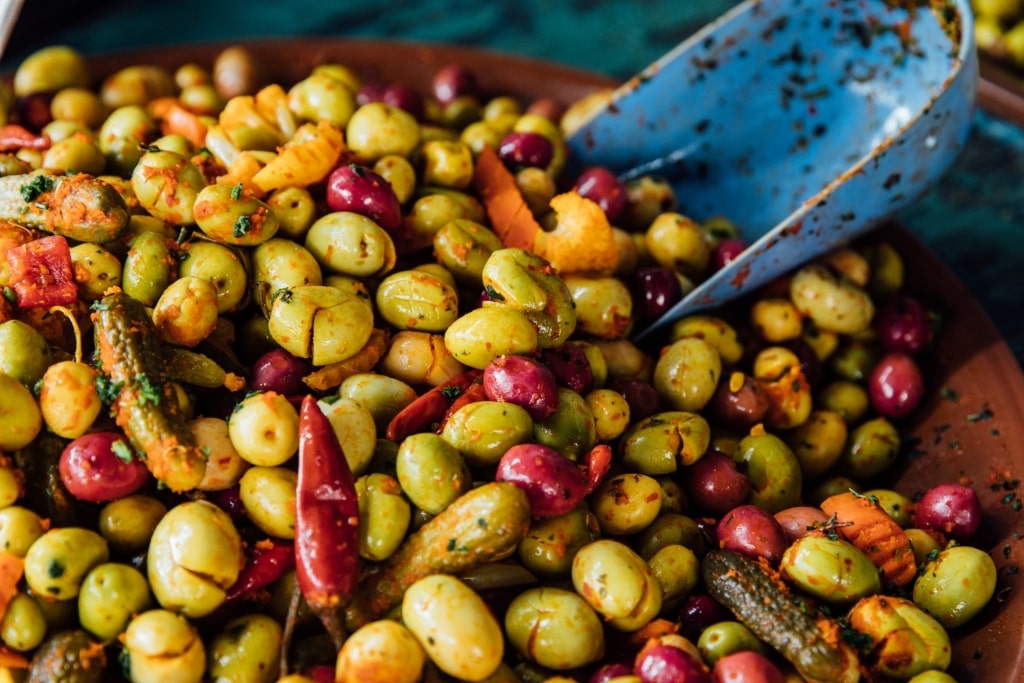
Olives
The “New” Medina, dating to the 1930s, mixes traditional stalls with more modern shops. The Habous Olive Market is the place for spices or other ingredients for Moroccan cooking—including olives, of course.
A more unusual shopping experience awaits on a food tour around the Central Market. At its historic seafood market, you can select your own fish to be grilled at a choice of nearby restaurants.
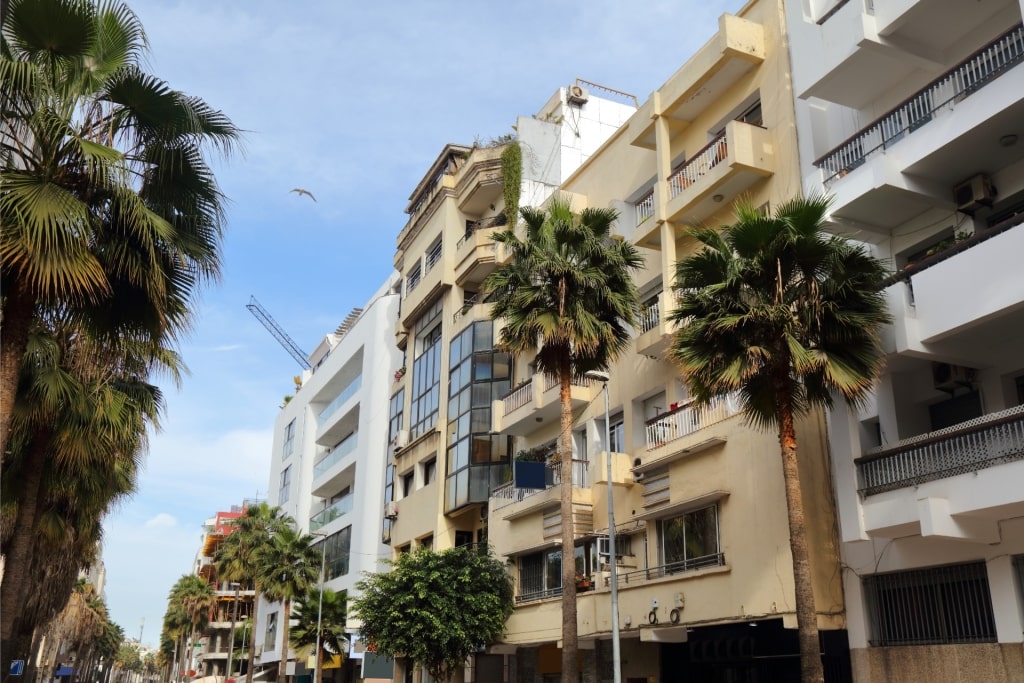
Gauthier
The upmarket artistic quarter, Gauthier, specializes in modern crafts by major local artists. Whether you want a painting or a unique piece of furniture, you should find it here.
For Casablanca-themed memorabilia, from posters to t-shirts, you’ll see plenty inspired by the 1942 film. Even more popular is imagery of Hassan II Mosque.
In souks and smaller shops, friendly, respectful bargaining is an entertaining part of the shopping experience. Fixed prices are the norm in larger stores and malls.
Cuisine

Tagine
Casablanca’s food is a mix of international influences, particularly French and traditional Moroccan cuisine. Tagines, couscous, and pastillas are to be found everywhere, while fresh seafood is a staple.
Moroccan cooks make bold use of aromatic spices such as cumin, coriander, and cinnamon. Sweet and savory flavors are often combined using ingredients such as lemons, olives, and dried fruits.
You can take cookery classes to find out more about Moroccan food. Some are held in private houses, where you’ll discover authentic homemade recipes.
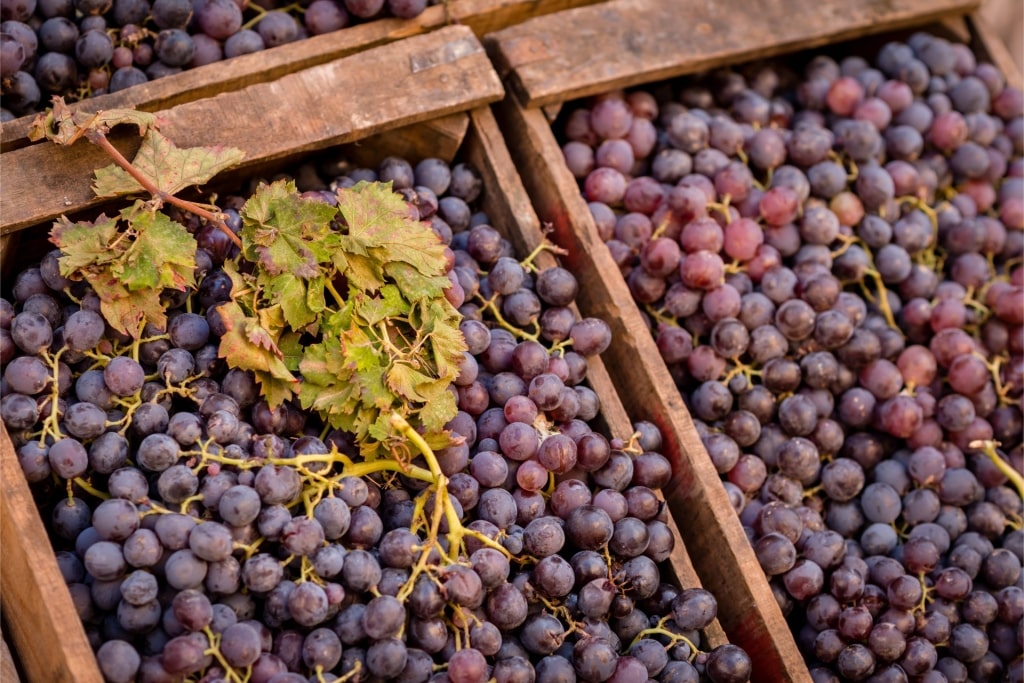
Grapes
Morocco has a small wine industry, with some vineyards near Casablanca, such as award-winning Domaine Thalvin. A wine-tasting tour may be an unexpected memory of your trip here.
Mint Tea, Coffee & Pastries
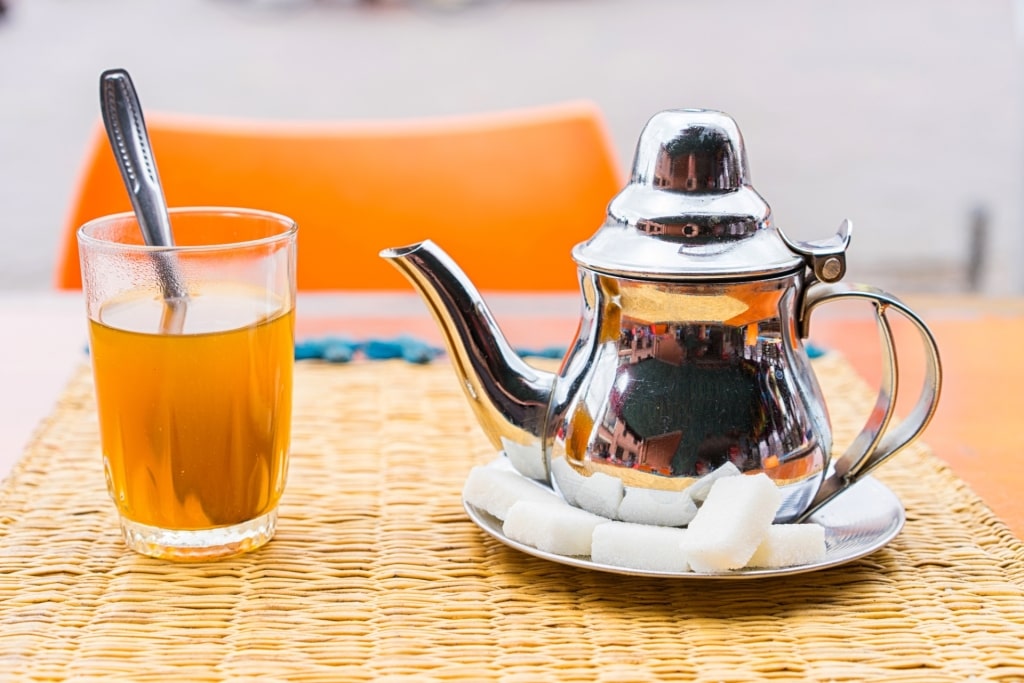
Mint tea
What is Casablanca known for? Traditional Moroccan hospitality is an important part of the social fabric. As such, serving and drinking mint tea has a deep cultural significance in Casablanca and Morocco generally.
Atay is made with strong green tea steeped in hot water with fresh mint leaves and lots of sugar. It’s usually poured from height into small ornate glasses to create a frothy top.
Visitors to homes or shops can expect to be greeted with a glass. It’s considered impolite to decline, a custom sometimes abused by shopkeepers to entrap potential customers.
However, visitors make up a much smaller proportion of shoppers in Casablanca than in cities such as Marrakesh or Meknes. That means a glass of tea is usually a genuine offer of hospitality.
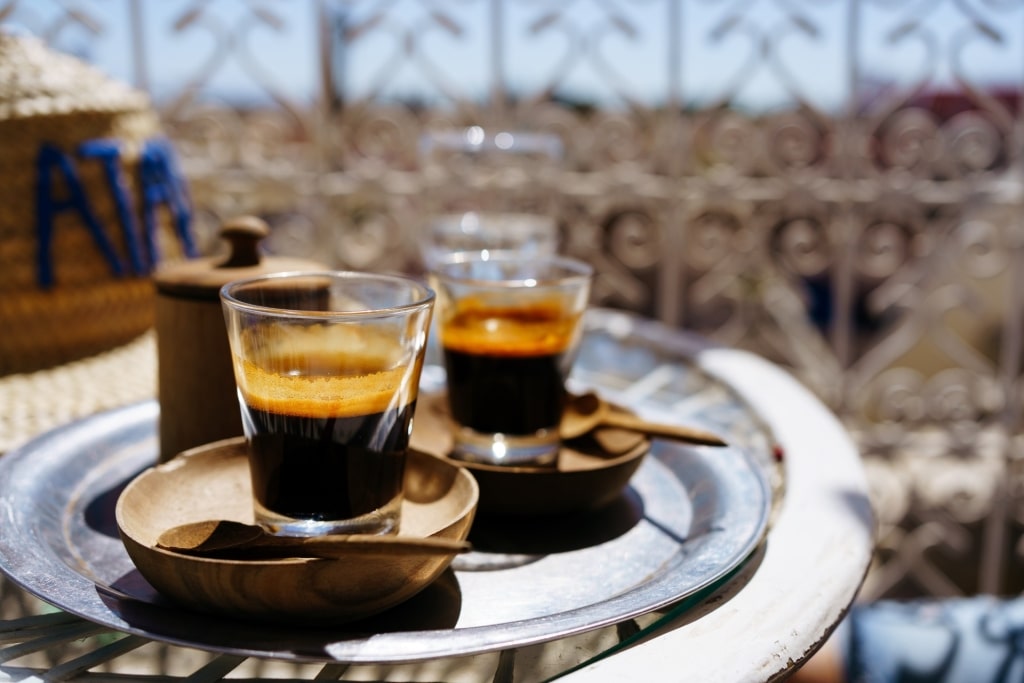
Coffee
Casablanca has also embraced European-style coffee culture. This happily co-exists in cafés alongside the traditional mint tea service.
You’ll find plenty of cafés on Boulevard Mohammed V and in the Maarif district that buzz from morning until late. Sit inside or out to people-watch while overdosing on pastries.
Moroccan pastries are delicate works of art in phyllo dough, rich with nuts such as almonds or pistachios. Dusted with powdered sugar or drizzled with honey, they are perfect accompaniments to sweet mint tea or a bitter espresso.
Art Deco Architecture
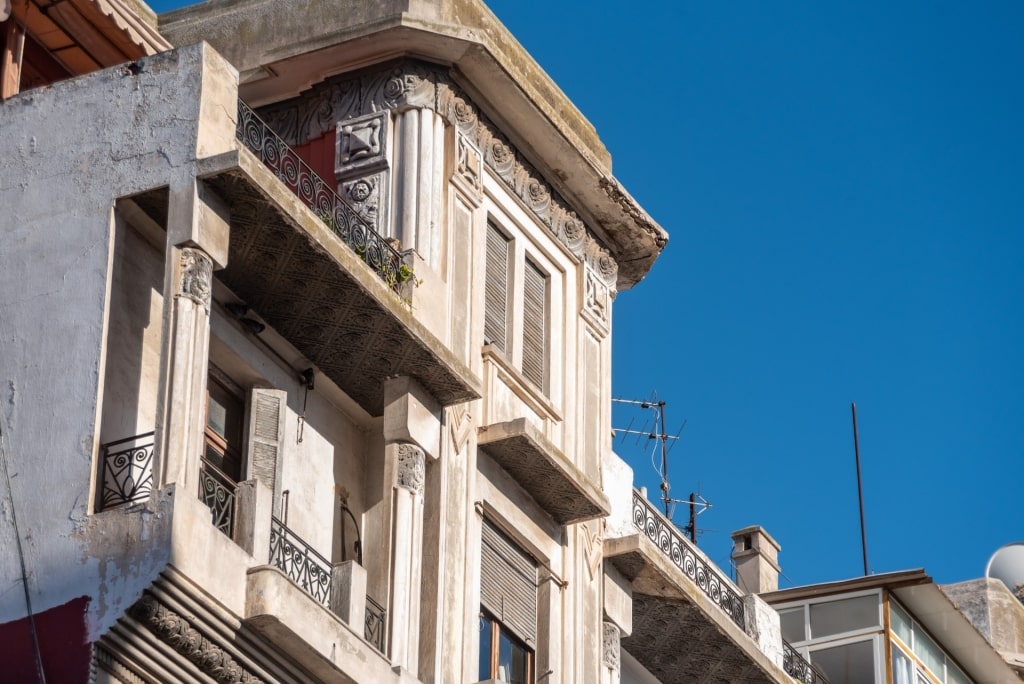
Art Deco architecture in Casablanca
“Casa”—as residents call it—is well known for its Art Deco architecture, a legacy of French rule in the early 1900s. The city expanded rapidly up to the 1950s and many major buildings reflect the style of those times.
Prime examples include the Cinema Rialto, the New Medina, and the Villa des Arts. This last is a beautiful 1930s mansion near Parc de la Ligue Arabe that is an arts center.

Sacré-Coeur Cathedral
The former French Catholic Sacré-Coeur Cathedral, now a cultural center, combines Art Deco with Neo-Gothic elements. Join a guided tour around the city center and Mohammed V Square, to see many more examples.
One unique local feature is the mix of Art Deco with traditional Moroccan elements. This created a style known as “Mauresque” or “Neo-Moorish”.
A prominent example is the Central Market on Muhammad V Boulevard, built in 1917. Its large gateway borrows features from the “Imperial Cities” of Marrakesh, Fes, Meknes, and Rabat.
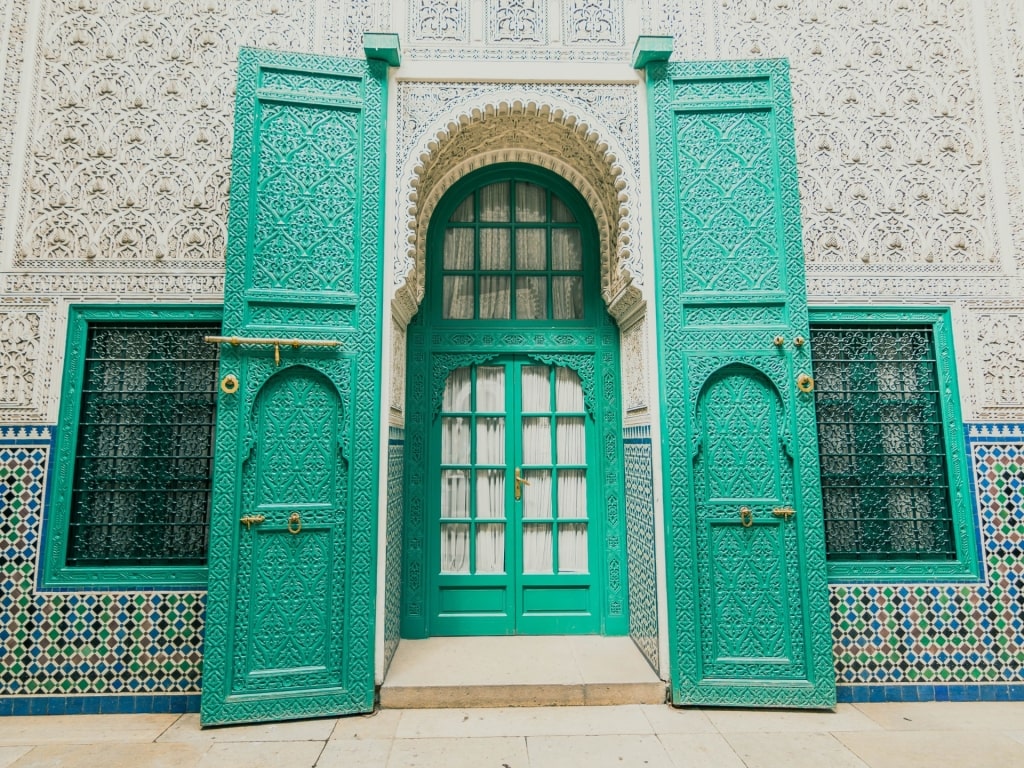
Mahkama du Pacha
Another example is Mahkama du Pacha—“the Pasha’s courthouse”, one of Casablanca’s most beautiful buildings. Its intricate zellij tiles, carved cedar-wood ceilings, and grand arches are exquisite.
You can also see this Neo-Moorish influence in the Wilaya—the former French Prefecture—and Bank al-Maghrib. Many residential buildings in the Gauthier and Mers Sultan neighborhoods, showcase the style as well.
Hassan II Mosque
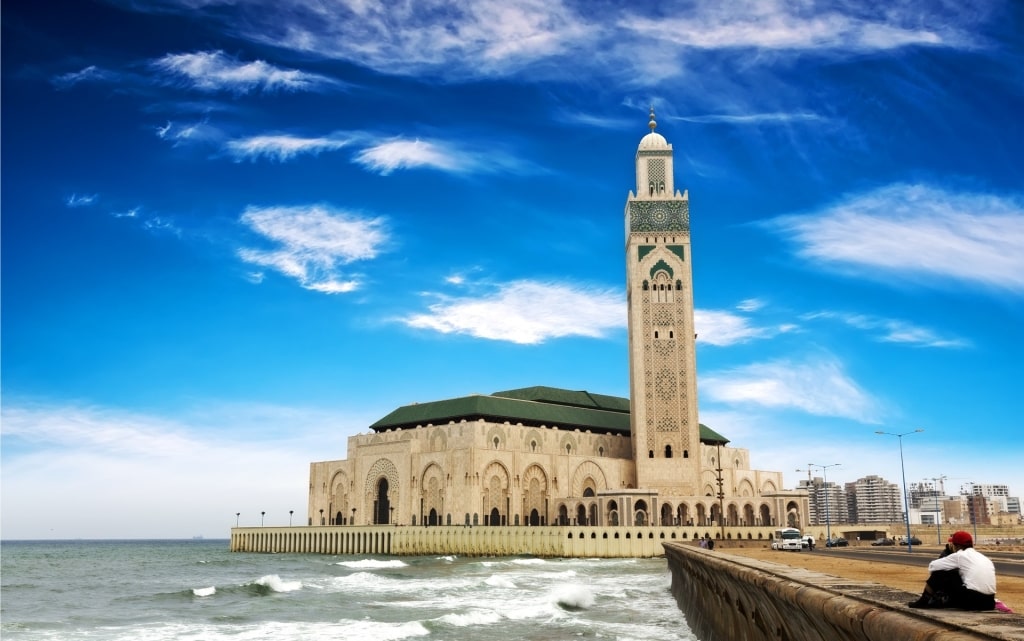
Hassan II Mosque
One of the best things to do in Casablanca is to visit Hassan II Mosque, which dominates the city’s skyline with the world’s second-tallest minaret. This architectural marvel can hold around 100,000 worshippers between its vast interior and sprawling courtyards.
That scale can be overwhelming but much of the wonder comes from smaller details. The mesmerizing zellij tilework, masterful wood carvings, and its setting over the Atlantic Ocean are all thrilling.
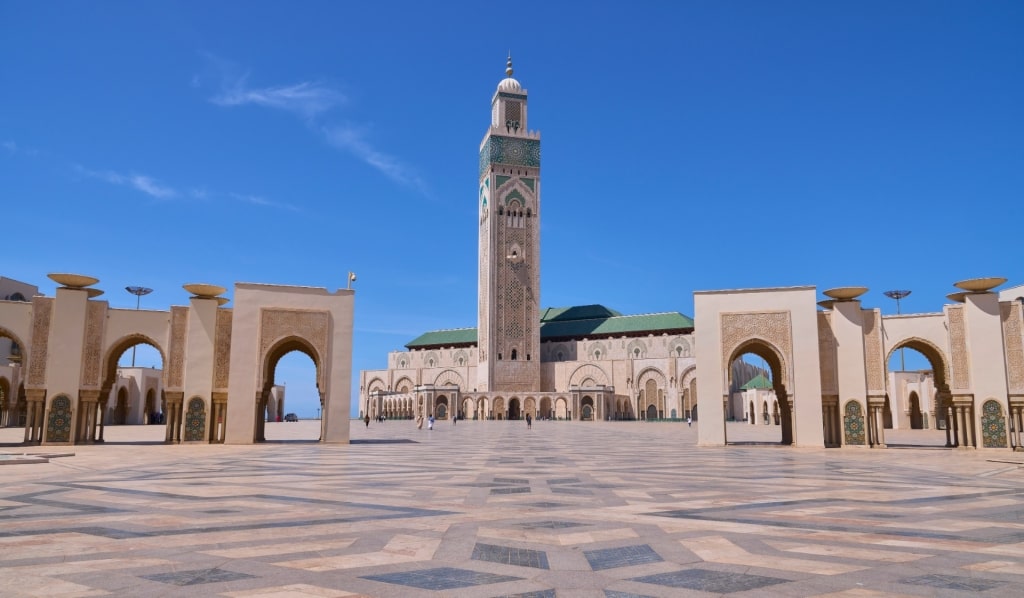
Hassan II Mosque
The site includes a museum of Moroccan history and one of the world’s largest Islamic libraries. As one of the few mosques in Morocco open to non-Muslims, it’s perhaps now one of the most famous locations in the city.
For any visit, you need to wear clothing that covers your shoulders and knees. Shorts and sleeveless tops are forbidden and you will be given a bag to carry your shoes.
Place Mohammed V
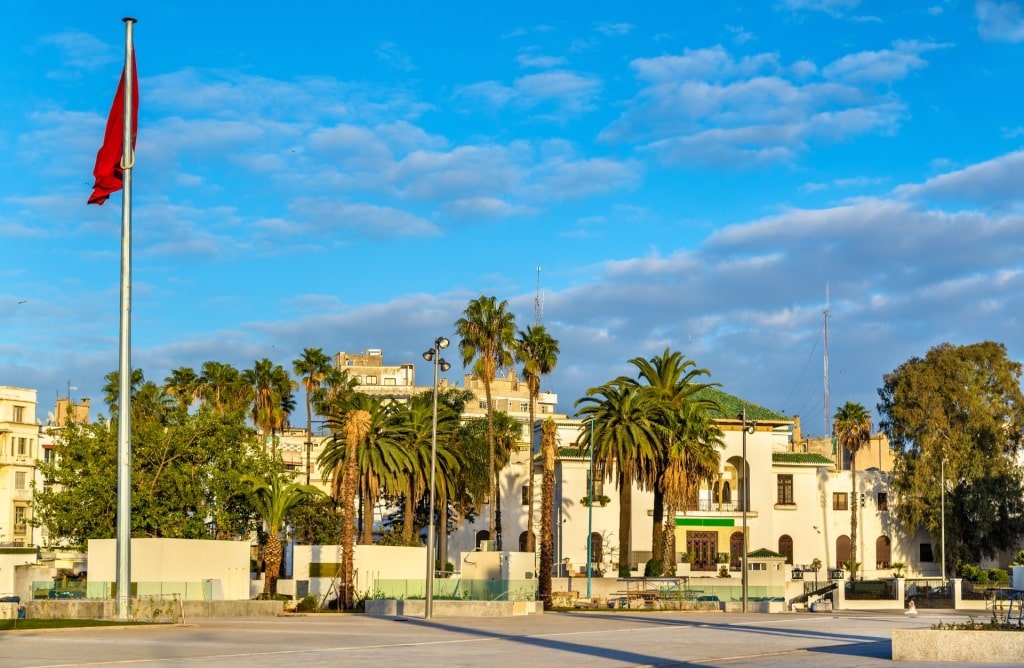
Place Mohammed V
Formerly called Place des Nations Unies—a name still seen on some maps—Mohammed V Square is Casablanca’s focal point. It has an illuminated fountain, a clock tower that’s a good meeting point, and many imposing buildings.
Those buildings—many notable for their Art Deco and Neo-Moorish architecture—include the Prefecture, Bank Al-Maghrib, and Wilaya. The Grand Theatre Charles de Foucauld and the French Consulate are also very photogenic.
The square stands at the junction of two major boulevards: Boulevard Mohammed V and Boulevard Hassan II. Sacré-Cœur Cathedral, the Arab League Park, and the Central Market are also nearby.
Quartier des Habous
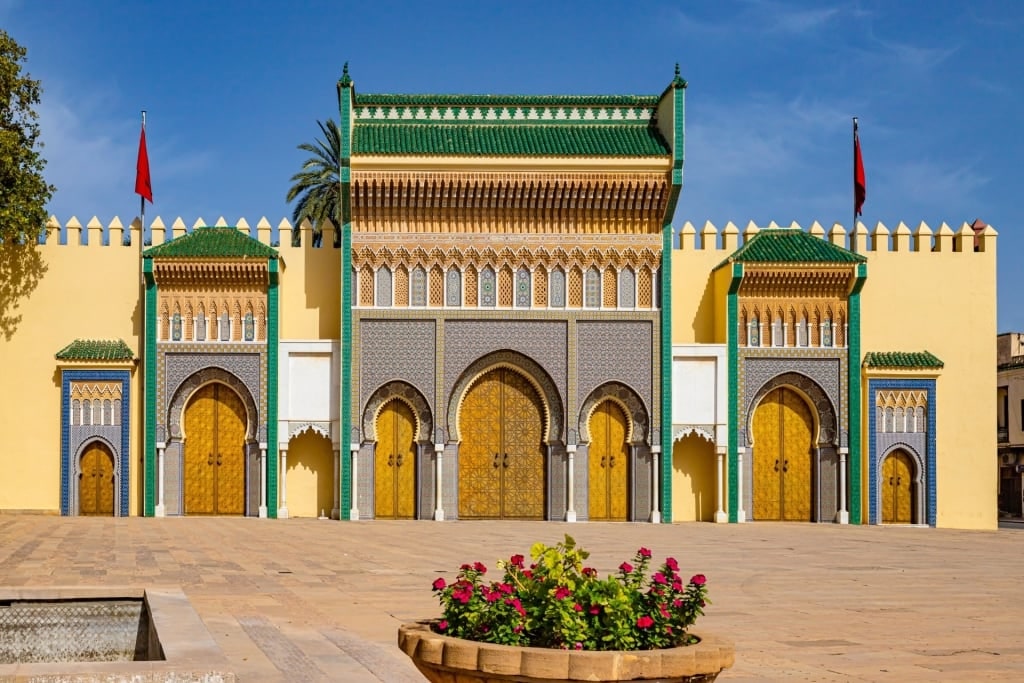
Quartier des Habous
The historic Quartier des Habous was laid out by French architect Albert Laprade in the 1920s. The design blends traditional Moroccan with a more modern art deco style.
It’s a place of arcaded streets, white-washed buildings, and plenty of zellij tilework. At its heart is the covered Souk Al-Habous, where you’ll find traditional crafts, spices, and textiles.
Notable buildings nearby include the lovely Moulay Youssef Mosque, the Royal Palace of Casablanca, and Mahkama du Pacha. The Royal Palace has a beautiful Islamic-style facade and its gardens are delightful.
Corniche & Beaches
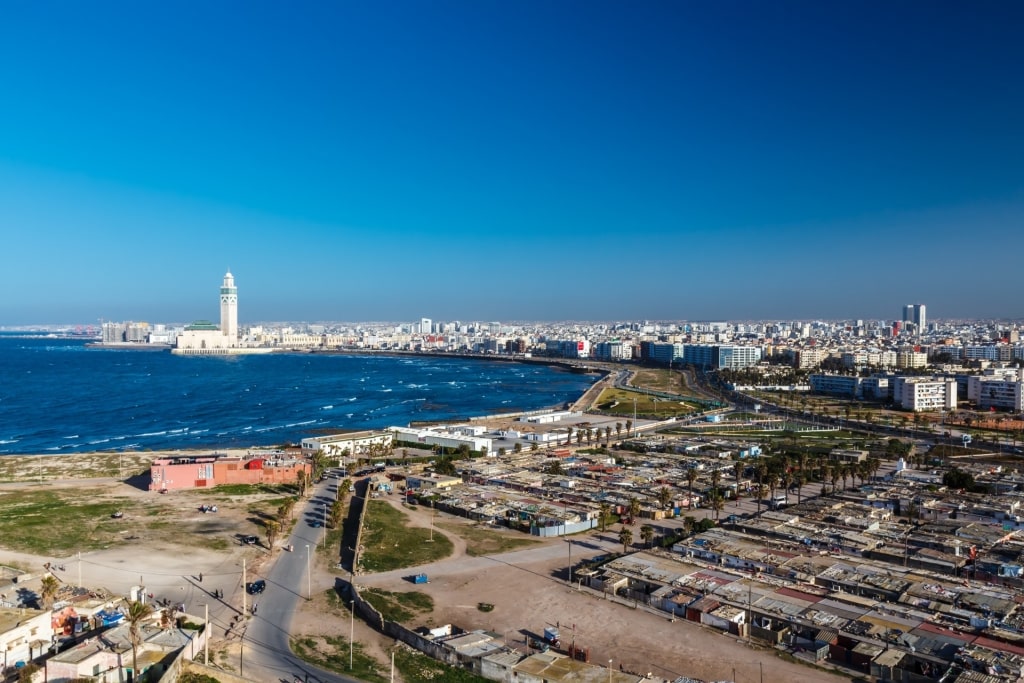
Ain Diab Corniche
One of the best things to do in Morocco is to visit the oceanfront Ain Diab Corniche, a popular place to stroll or relax in a café or restaurant. Its appeal lies in the beautiful views of the Atlantic coast and the cooling breezes found there.
The promenade is fronted by a series of beach clubs and swimming pools. You’ll also find many restaurants, cafés, and ice cream shops along it.
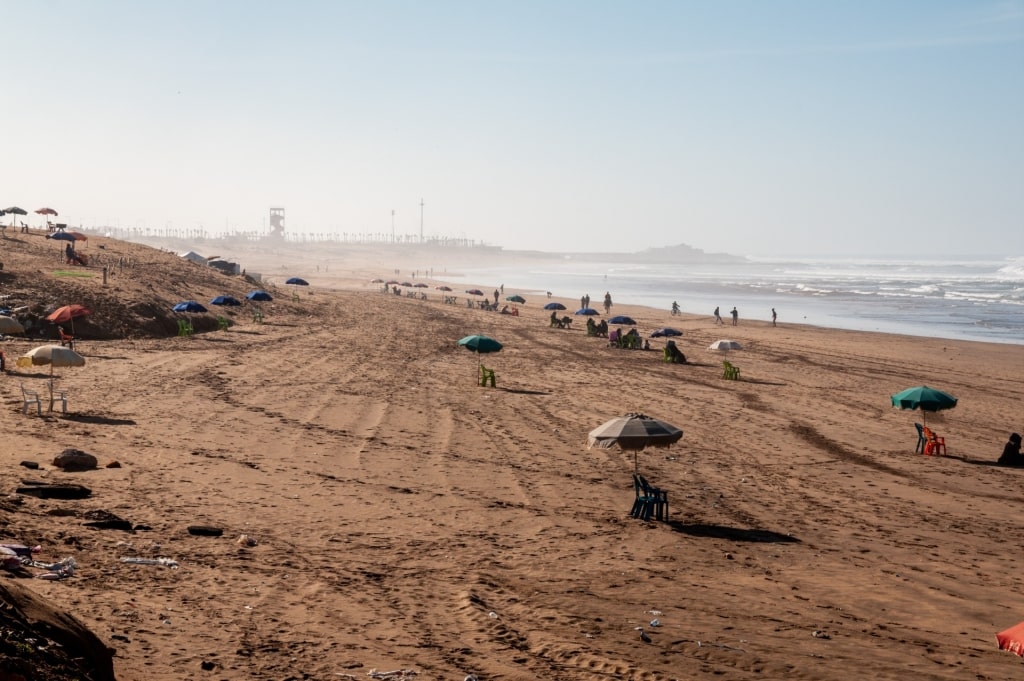
Plage Ain Diab
The mile-long Plage Ain Diab is one of the best beaches in Morocco. You’ll find a surf school and plenty of bodyboarders, although the Atlantic water can be chilly.
As with any urban beach, summer makes it a place of entertaining chaos. Soccer games carry on amid picnicking families, while the camel rides simply add to the scene.
Culture
As Morocco’s most modern and Western-influenced city, the contemporary arts scene is an exciting one. Many galleries and other spaces showcase both established and emerging local artists.
Well-known names include L’Atelier 21, Loft Art Gallery, and La Galerie 38—part of Le Studio des Arts Vivants. This last is a multi-disciplinary arts center, which also teaches dance, theater, and music.
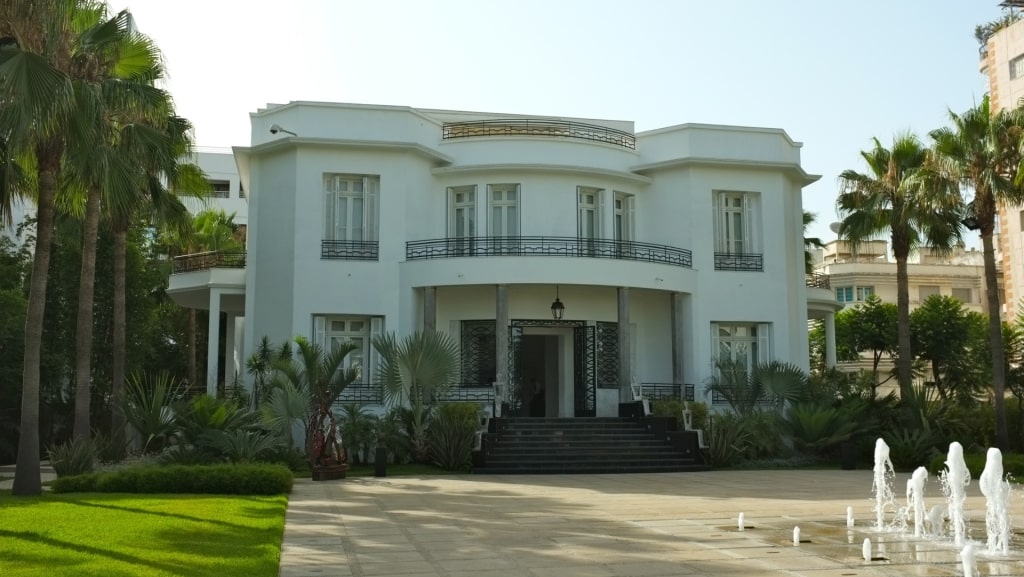
Villa des Arts Photo by ANGE URBAIN on Flickr, licensed under CC BY-SA 2.0
The Villa des Arts hosts regular art exhibitions, workshops, and events. L’Uzine is a cultural space combining visual arts with music, often in experimental ways.
Mers Sultan was recently voted the coolest neighborhood in Africa—and second coolest in the world. Many artists have moved in to add film-making, experimental music, and street art to its eclectic architectural appeal.
Casa now has an underground music scene that throws up artists in genres from hip-hop to electro. Traditional music is much easier to find, with many wonderful old LP records still to be discovered in the souks.
Annual arts festivals include Jazzablanca in June and the L’Boulevard in September. This last focuses on younger local talent in genres from rock to fusion.
Street Art
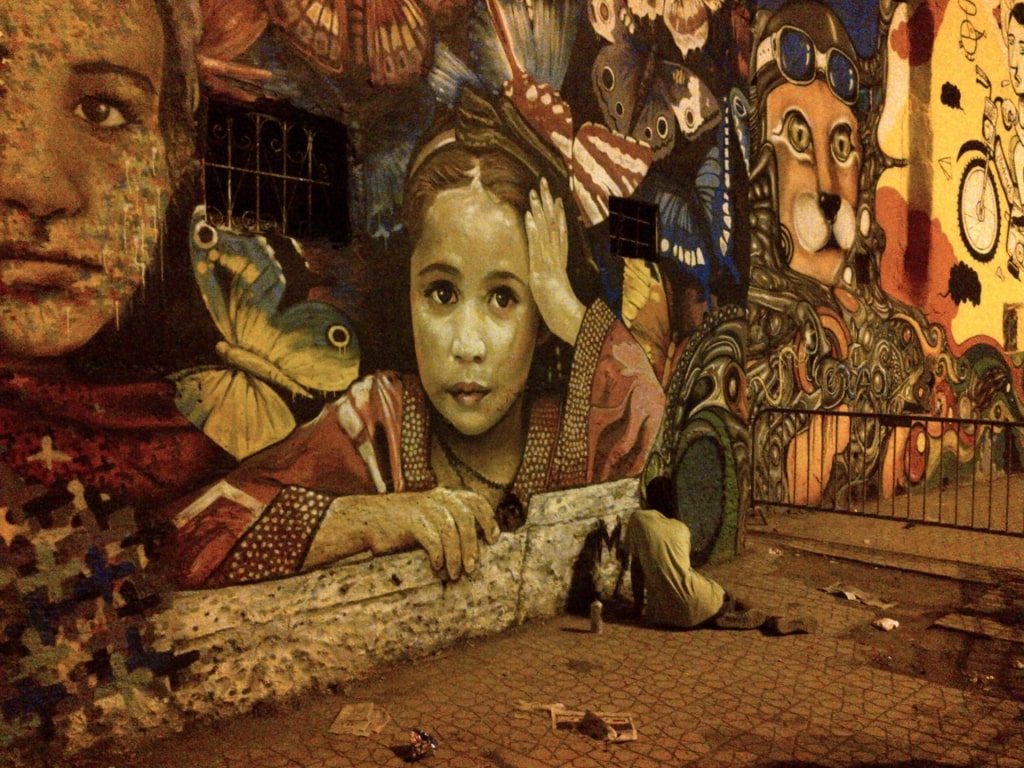
Street art in Casablanca Photo by Sam Nabi on Flickr, licensed under CC BY-SA 2.0
Casablanca has its lovely Corniche-backed seafront but does lack green spaces. One notable exception is Parc de la Ligue Arabe, a popular spot for picnics and relaxation.
You will notice how many streets have blooming bougainvillea or shady palm trees. One other thing notably brightening Casablanca’s urban spaces is its abundant street art.
Prime sites include the Casablanca Street Art Gallery and the Corniche. The Sidi Moumen neighborhood is also known for its beautification efforts using street artists.
Many murals use traditional Moroccan motifs and patterns. While some are purely abstract, others address political or social issues.
Rebel Spirit is a local street art collective who work on large-scale projects. One of their massive murals showing an underwater scene covers a building near the port.
Other names to look out for include Armine Brush, Mehdi Annassi, aka Machima, and the Alouane Bladi street art collective. The WeCasablanca arts organization holds regular arts or music festivals but also arranges street art tours.
That Film
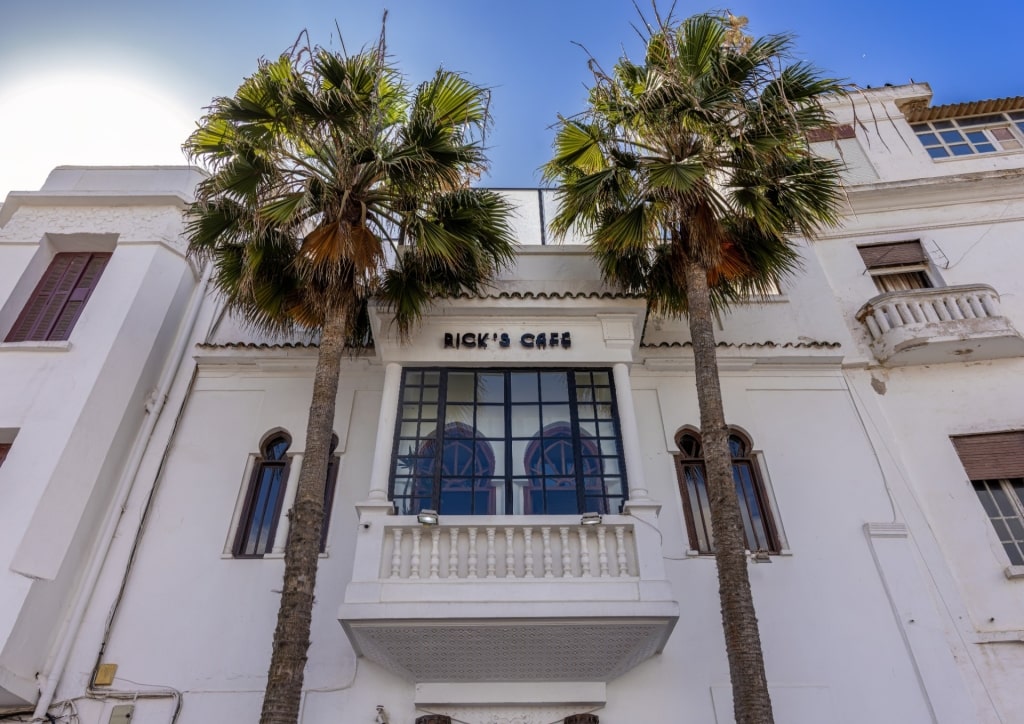
Rick’s Café
Although it was filmed on a Hollywood soundstage, Casablanca is indelibly linked to the 1942 classic named for it. Starring Humphrey Bogart and Ingrid Bergman, it has given the city an exciting, romantic image ever since.
You can visit the recreated Rick’s Café to indulge in some of that “of all the gin joints in… all the world” atmosphere. The piano plays, cocktails are served, and dressing up is encouraged.
The restaurant hosts regular film nights showcasing the original film and other classics of that Film Noir era. Any fan of cinema will also enjoy the annual Casablanca International Film Festival, which showcases more modern Moroccan filmmakers.
Jewish Heritage
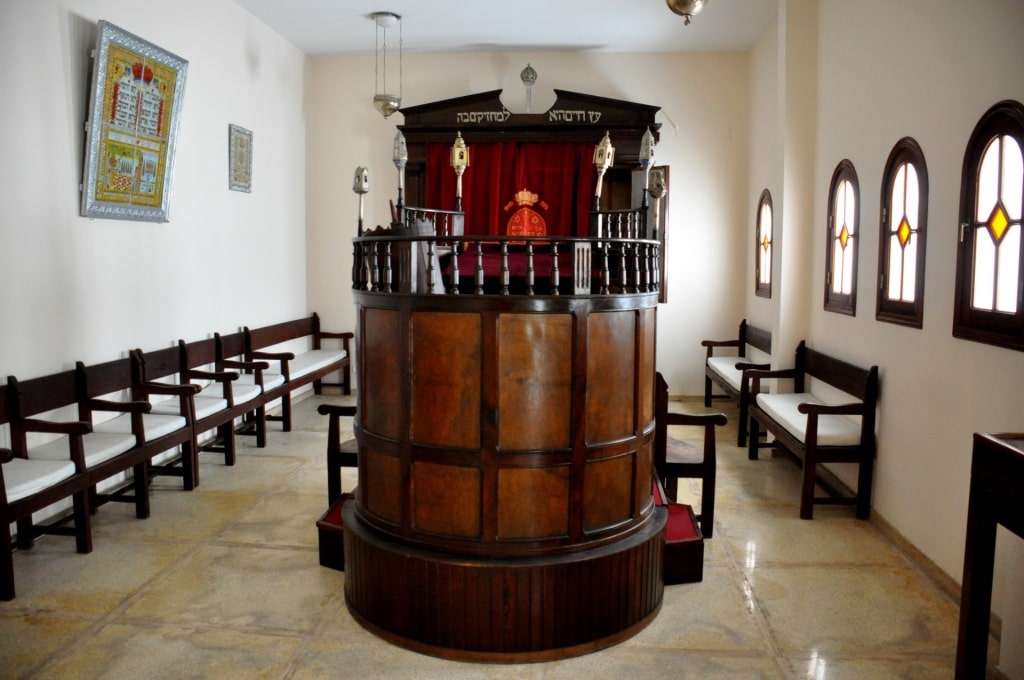
Museum of Moroccan Judaism Photo by Neuroforever on Wikimedia Commons, licensed under CC BY-SA 4.0
Casablanca is home to the Museum of Moroccan Judaism, one of only two of its kind in the Arab world—the other being in Fes. Set in a former orphanage, it tells the story of Morocco’s Jewish community through photographs, costumes, and other artifacts.
The city’s Jewish quarter, or Mellah, reflects this rich cultural heritage. You’ll find a kosher bakery, several kosher restaurants, a Jewish school, and three synagogues.
There are still 30 synagogues in Casablanca, out of 60 that once served the Jewish community. The largest and only fully active one, Temple Beth-El, is considered the most beautiful in Morocco.
Day Trips
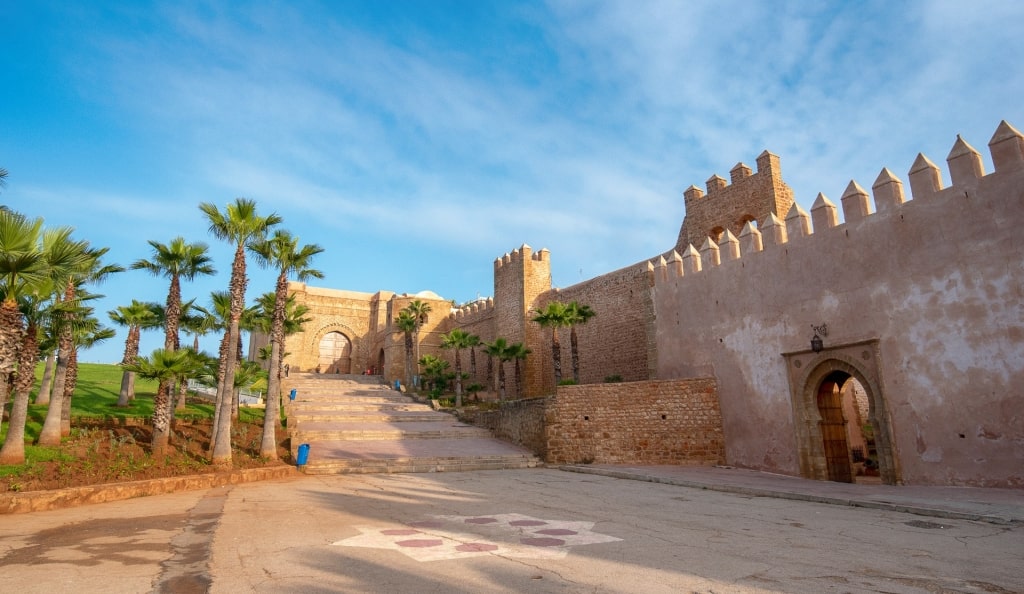
Kasbah of the Udayas, Rabat
Casablanca, with its port and airport, is often a base for visiting Rabat, Morocco’s capital city. The famed Portuguese Cistern at El Jadida is also within easy reach.
Rabat holds sights such as the 12th-century Hassan Tower and the Kasbah of the Udayas. This last is a historic fortress with beautiful Andalusian gardens.
The Mausoleum of Mohammed V, a beautiful example of modern Alaouite architecture, is also unmissable. Anyone interested in art will want to see Rabat’s Museum of Modern and Contemporary Art.
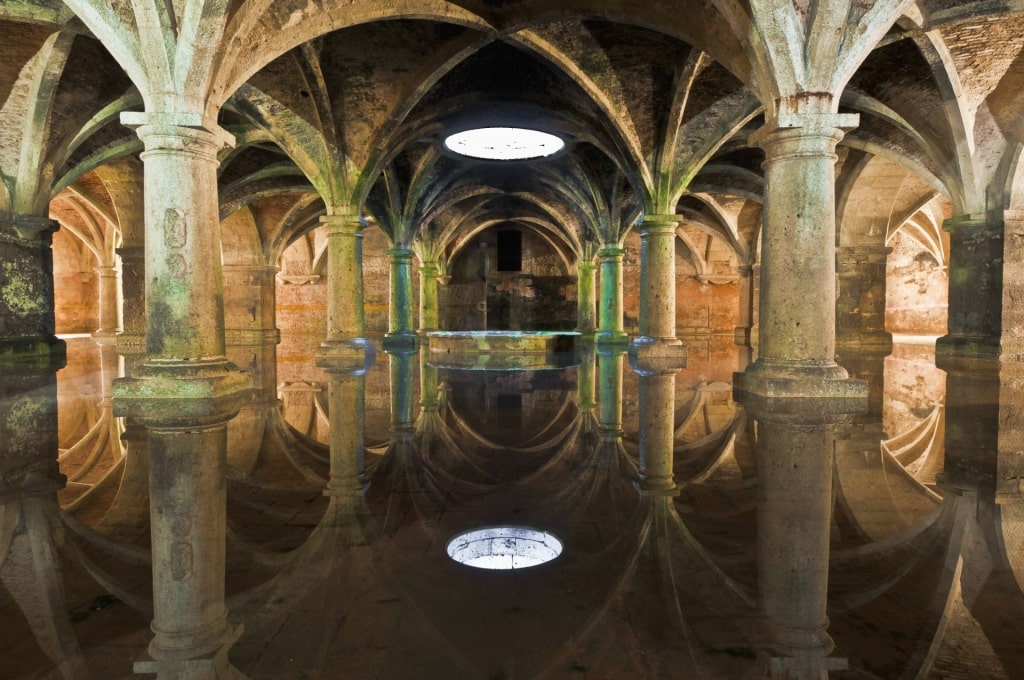
Portuguese Cistern, El Jadida
El Jadida’s Portuguese Cistern is an atmospheric underground chamber, lit by an ethereal light. Made famous by director Orson Welles in his production of Shakespeare’s Othello, it’s part of the UNESCO-listed Portuguese City.
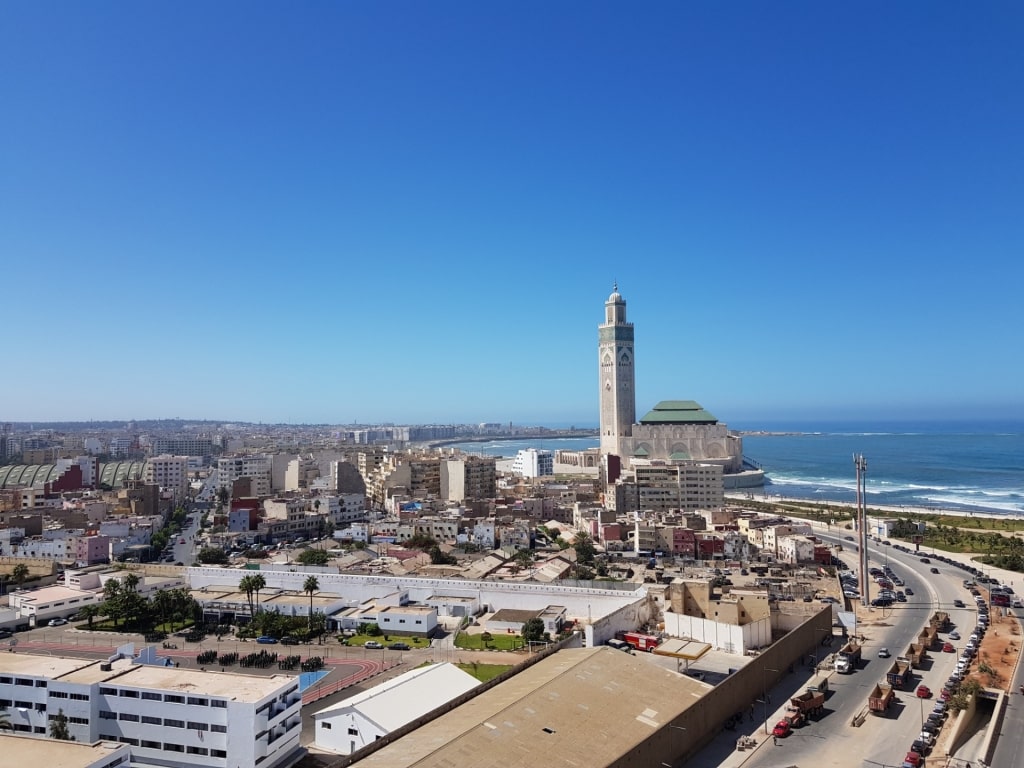
Casablanca
Are you tempted to visit Morocco’s biggest, most buzzing city? Then browse Celebrity’s cruises to Casablanca and plan your adventure.
